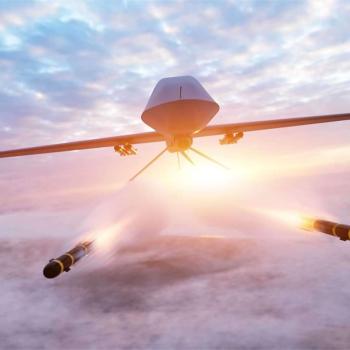Since Secretary of Defense Leon Penetta lifted the 1994 ban on women in combat, my reaction to the ensuing commentary has ranged from indifferent, to puzzled, to infuriated.
I am a female veteran who proudly served in the 3rd Infantry Division of the United States Army. My brigade was deployed with the surge into Iraq during 2007, and our mission was to secure Al Qaeda strongholds where there was no U.S. presence. I was stationed in a place affectionately referred to as The Triangle of Death. While I did not participate in the initial waves of invasion onto the battlefield, I was eventually attached to a very small combat unit that conducted foot patrols on a daily basis, usually in locations we had yet to secure.
I was one of many women who, I now realize, were ghost soldiers.
Apparently at the official level, we did not exist. After all, there was a ban in place that prohibited women from being assigned to combat units smaller than brigade size, and yet, there I was, living on a patrol base with less than a company of U.S. soldiers and a small, rag-tag group of Iraqi Army personnel.
Our front gate was an M113 tank. It rolled forward and backward to open and close.
I was not there because I had something to prove, or because somebody wanted to make me feel good about being a woman in uniform. My commander did not send me because he wanted to be politically correct. I was there because I was one of a handful of soldiers trained to do a specific job, and the unit I was attached to needed that job to be done.
Ten years into fighting two wars with an all-volunteer force has left us a little short staffed, and anyone who thinks we could have sustained our missions on the backs of the same small group of soldiers, without the women who make up 14 percent of the fighting force, needs a reality check.
The Army doesn't make decisions against its own self-interest. When women have been sent to the front, it is because they are among the few who have been trained to do a particular job, or they have been regarded by someone in charge as the best person available to get the job done.
It is indeed time that the nation had a discussion about women in combat, but this conversation should be about what we have learned from having already placed women on the battlefield in this past decade, and not what it will look like if we allow them to go. For those of you who haven't gotten the memo, we are already there.
There seems to be a bit of confusion, however, over the term combat. It remains to be seen whether or not Secretary Panetta's decision will actually allow women to serve in the most forward positions, mainly in the Infantry and Special Forces. The different branches of service are being given the opportunity to seek exceptions to allowing women to fill roles that they feel must remain exclusively male. If an exception will be filed for any job, it will most certainly be the Infantry, so this raises the question: if women may not be allowed to serve in the Infantry, what is the point of lifting the ban on combat?
The point is that the term combat encompasses far more than just serving in the Infantry, and while we have been officially discouraged from making any broad interpretation of what it means to be "serving on the ground," in reality, I repeat, we are already there. And boy, are we already there!
While my brothers and sisters in arms have been energetically arguing the Infantry question, the civilian population has been having an entirely different discussion altogether, and a poorly-informed one at that; it seems the country has no idea where women have been serving for the last decade.
The group Combat Veterans for Congress issued the following statement on their website:
There is very big difference in women flying combat missions, providing medical support in combat, in providing MP Guard duty, being involved in convoy duty, being involved in intelligence support, etc., and being in a Combat Infantry Unit for three months on end with improper hygiene facilities, with no breaks, and facing an enemy daily—face to face—in a killing zone.
They are right, and they are wrong. There is a difference, but it is all still combat, and the general public is operating under the assumption that our women in uniform have been sheltered from that. Rather than changing reality, lifting the ban may—after permitted exceptions are applied—do nothing more than simply recognize what has already been taking place, but that's worth finally recognizing.




